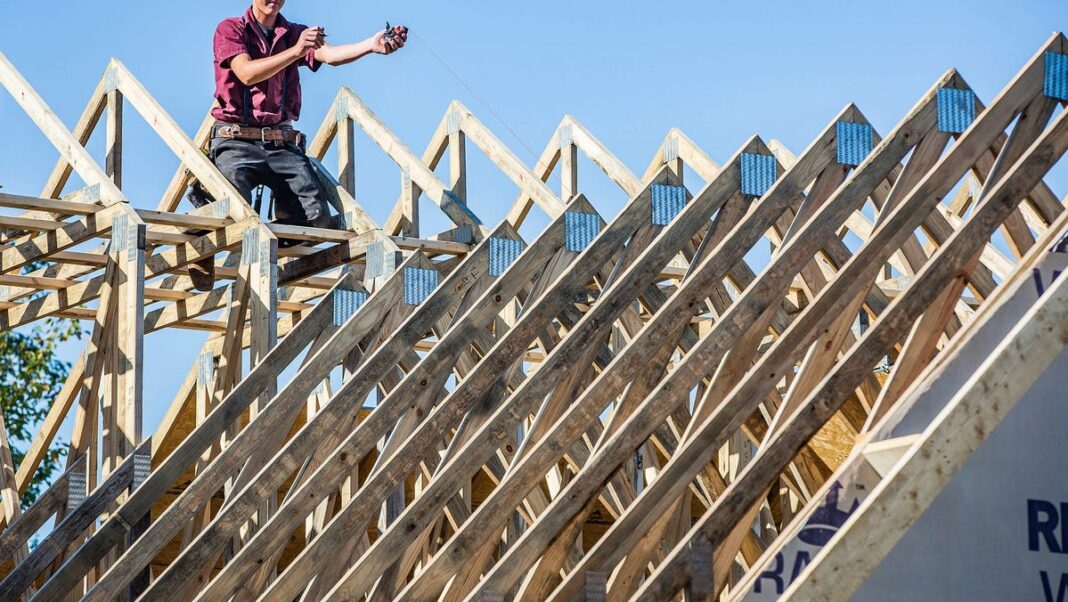The U.S. Faces a Housing Shortage, and Mass Deportations Could Exacerbate the Problem.
As Donald Trump gets ready to assume the presidency and fulfill his promise of deporting immigrants, many are weighing the potential effects on the housing market.
There is a significant lack of housing across all types. This issue largely stems from a sharp decline in new home construction during the Great Recession, a trend that persisted for years afterward.
Immigrants constitute a crucial part of the construction workforce, and large-scale deportations would severely harm this industry, not to mention the profound social and emotional toll, according to experts and advocates.
Despite the implications, few industry leaders have publicly addressed the potential fallout. Consequently, YSL News reached out to America’s biggest home builders for their perspectives.
Unfortunately, companies like Taylor Morrison, NVR, Inc., KB Home, and Century Communities, Inc. opted not to provide comments. D.R. Horton, Lennar Corporation, PulteGroup, Inc., Meritage, and LGI Homes did not respond either. Clayton Homes directed the inquiry to the Manufactured Housing Institute, which was unable to arrange a representative for timely comments.
One organization that did agree to comment was the National Association of Home Builders (NAHB). Ken Wingert, NAHB’s chief advocacy officer, stated, “Any mass deportation is bound to affect the economy, particularly the construction and housing sectors, which will likely bear the brunt of it.”
He continued, “We need a comprehensive immigration policy and reform, and we hope Congress will revisit this when they reconvene in January. We support bringing more workers into the labor market to alleviate the ongoing housing supply issue.”
NAHB has consistently highlighted the demand for additional construction workers. Their latest report noted that the average annual openings in the construction field amount to about 723,000.
According to the same report, immigrants represent 25% of the overall construction workforce, and nearly 33% of those in construction trades. However, Wingert mentioned that NAHB cannot determine how many of those workers are in the country legally.
Documented vs. Undocumented Workers
Francesc Ortega, an economics professor at Queens College in New York, has researched this issue extensively. By analyzing data from the Census Department using a demographic framework, he estimates that around 15% of construction workers are undocumented.
It is evident that the presence of many immigrants, whether they are documented or undocumented, has kept construction labor costs considerably lower than what they would be with a predominantly native workforce. A 2020 analysis by the Labor Department showed that foreign-born workers earned less than their native-born counterparts. Immigrants across all industries made about 12% less, while in construction, they earned 24% less than native workers.
In 2023, Ortega’s analysis revealed that hourly earnings for undocumented construction workers were 36% lower than those of documented workers.
Michael Lukens, executive director of the Amica Center for Immigrant Rights, a national advocacy organization, expressed a desire for an immigration system that is both compassionate and legally sound. “We also need an economic framework that isn’t predicated on the exploitation of workers,” he stated.
Lukens pointed out that the fear of deportation enables employers to take advantage of vulnerable workers. “It’s unfortunate that an industry reliant on immigrants isn’t willing to advocate for them. It’s not surprising when profitability drives decisions that align with populist agendas,” he remarked to YSL News.
How Mass Deportations Could Worsen the Housing Crisis
While it might be easy to assume that mass deportations would lead to price increases, research by Ortega and other scholars indicates that the situation is more complex.
“In construction, documented and undocumented workers play complementary roles rather than substitutive ones,” Ortega explained. “If immigrant workers are deported or leave, native workers are unlikely to fill those positions as they tend to be employed in different roles, like sales within construction firms.”
Ortega emphasized, “It’s not feasible to just relocate workers at will. That simply won’t happen.”
This indicates that in a nation desperately needing millions more homes, the loss of any workers who contribute to construction will only exacerbate the existing crisis.
“Mass deportations would devastate both the construction and housing sectors,” Lukens warned. “It would also have a severe impact on agriculture and impose immense costs that would harm the economy significantly. This approach is unacceptable, both ethically and economically.”

